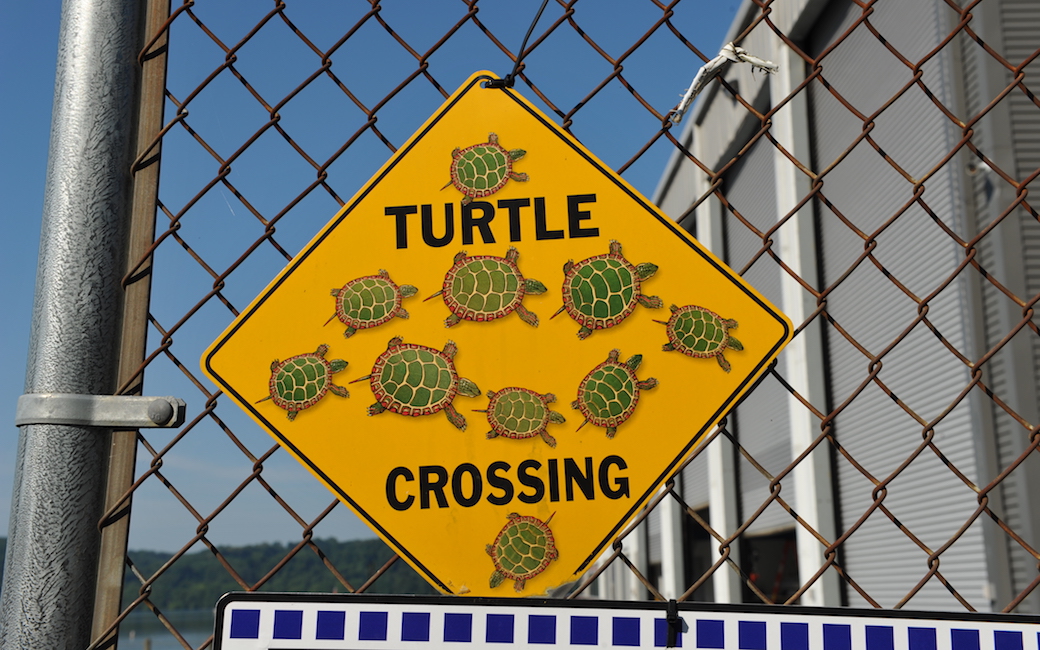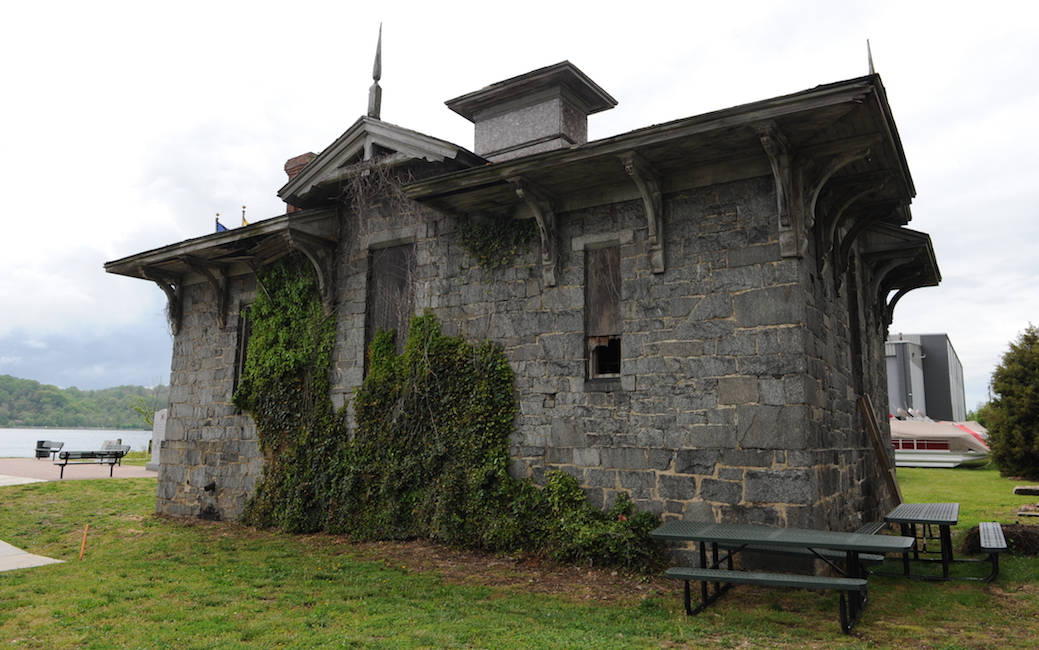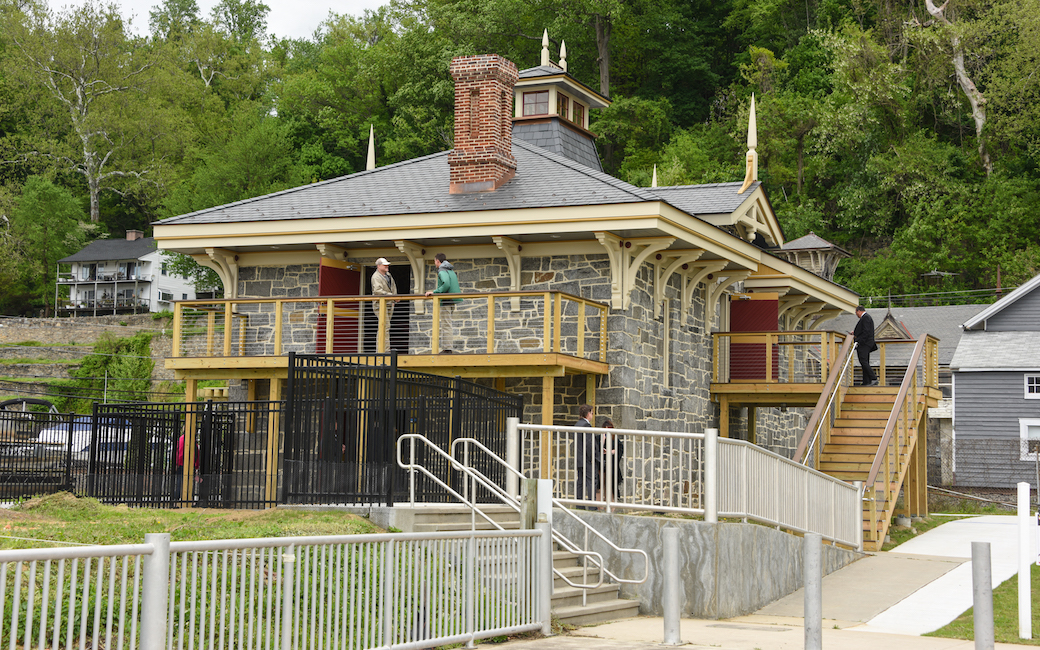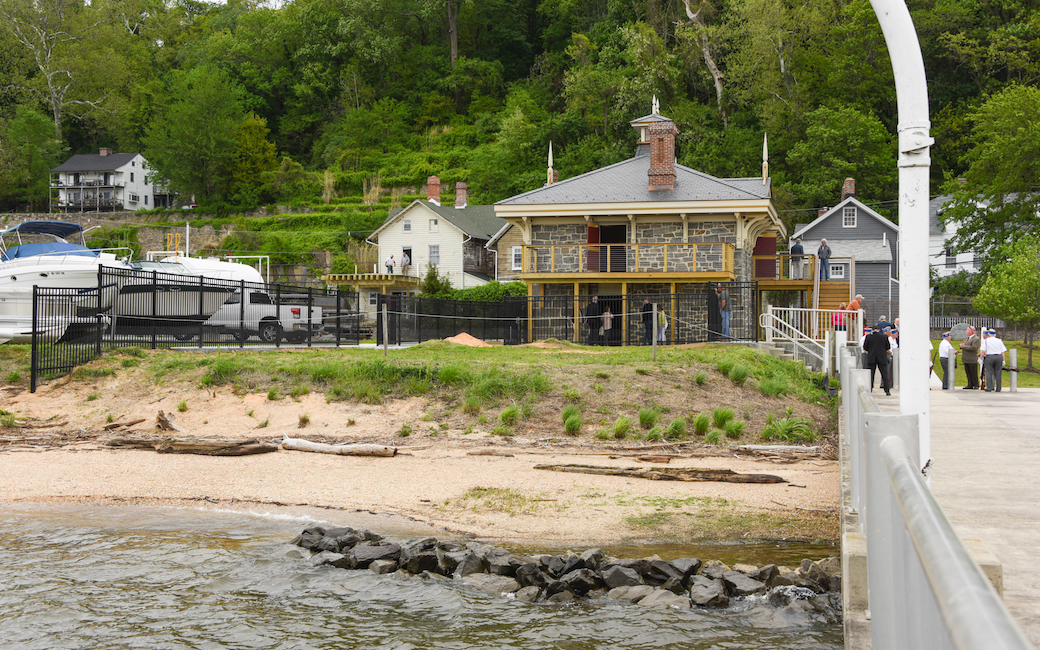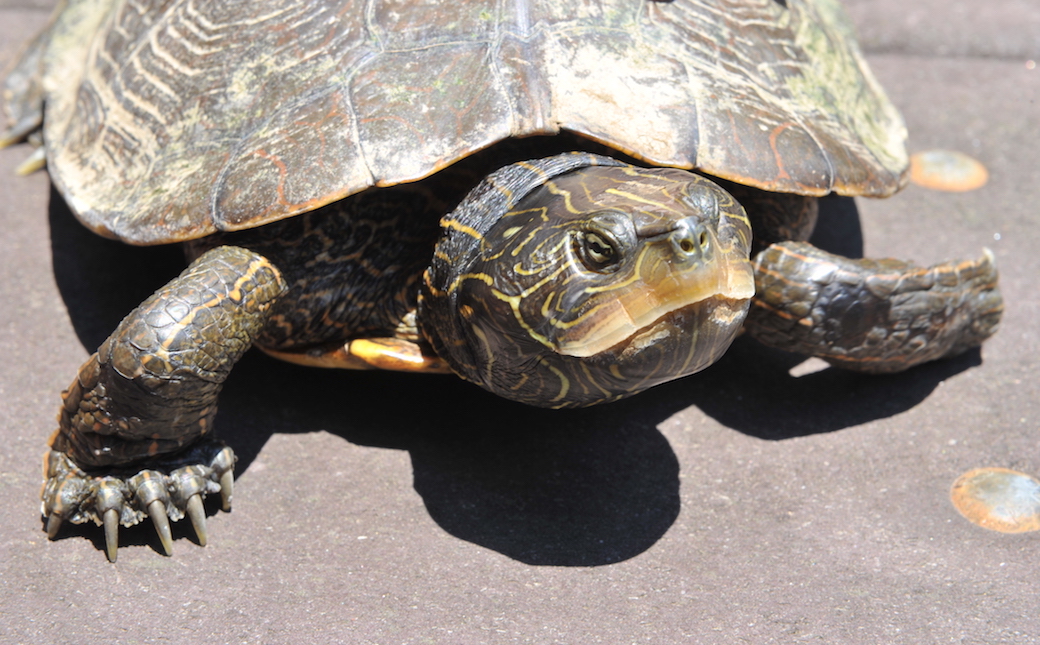
Partnering to preserve and protect the Northern Map Turtle
"When you have people who have open minds and who are willing to listen to each other, both economic development and endangered species protection are possible.”
By Megan Bradshaw on June 8, 2017
Rhonda the turtle is mobilizing humans to save her species.
In 2008, Towson University biology professor Rich Seigel, Ph.D., and graduate student Teel Richards-Dimitri ’10 undertook a status survey on the Northern Map Turtle in Port Deposit, Maryland, at the request of the state Department of Natural Resources.
The results revealed a small but successful population.
“This is the only place where turtles have successful nested in the entire Susquehanna River,” said Seigel. “The ‘natural’ places where the turtles nest on sandbars and islands—almost all the nests are killed by raccoons. We’ve been monitoring the nests in [town] since about 2009, and only one has been taken by a raccoon.
“It’s a very important piece to the puzzle of preserving the Northern Map Turtle in the Susquehanna River.”
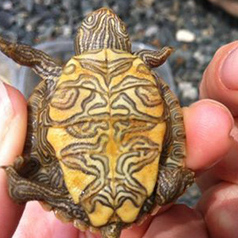
A turtle nicknamed Rhonda would plod to her nest at the back of Tome Landing Marina’s parking lot, with an assist from marina employees who cleared a path.
“When we first found out about it, we honestly didn’t believe it,” said Seigel. “We told the people who were telling us there were turtles coming on shore in the middle of town that they were crazy.”
Former undergraduate researcher Sarah Cooke ’16 remembered when she was called to the condos near the marina.
“We got a call from one of the residents, saying that there was a turtle nesting in their garden. They all knew us as the ‘turtle girls’ and would frequently call us when they saw map turtles around their houses. [Classmate] Jenna [Cole] and I spent over two hours watching the turtle and waiting underneath people's decks and houses for it to finally nest before retrieving it to collect data.”
The Research
Seigel estimates that between 30-40 students have participated in the research project since its inception. Graduate student Brian Durkin ’17, who earned a B.S. in biology from TU in 2014, is one.
“It’s become increasingly more important to have research experience in terms of gaining employment—especially in getting into grad school,” he noted. “Graduate schools want someone who can come in and be productive and research right off the bat. Being able to bring in undergraduates and give them experience is important, and I like helping the undergraduates.”
Jenna Cole ’16, another undergraduate researcher, is now a graduate student at the University of Florida with Cooke.
“This project allowed me to experience the realities of research,” she said. “Things hardly ever go the way you expect, and you will have to have a backup plan for your backup plan. It improved my critical thinking skills, my decision-making skills and my endurance. Most importantly, it has increased my confidence.”
Seigel agrees.
“Students can’t get jobs unless they have undergraduate research experience. Universities are where opportunities for that occur because you have people doing creative, scholarly research that involves students.”
TU has had a number of corporate partners to help fund paid student research positions, including Exelon Corporation and the Maryland State Highway Administration.
“In terms of who we have for partnerships, it’s been terrific,” Seigel said. “Obviously the town of Port Deposit itself has been a big partner. Everyone from their Chamber of Commerce to the local citizens to the local homeowners associations and businesses and restaurants has all been helping us out in a variety of ways.”
The Renovation
One of those ways was the renovation and repurposing of the 166-year-old Tome Gas House into the Visitors’ Center and TU Research and Education Center. The project was supported by donations and grants from the Maryland Historic Trust, along with the Maryland State Highway Administration, Video Lottery Terminal fund, Maryland Department of Housing and Community Development, Dillow Architect Associates and the Port Deposit Chamber of Commerce.
The first floor is a visitors’ center and outlet for the Bainbridge U.S. Naval Training Center museum. The second floor is exclusively for TU researchers who use closed circuit TV to monitor turtles’ nesting grounds and a spotting scope to watch basking. The researchers also mark and measure any turtles that get caught and teach the public about conducting research on an endangered species.
TU's Office of Partnerships & Outreach worked with Seigel and Port Deposit to formalize a partnership and develop the idea for an interactive display to highlight the town's rich heritage and the natural resources of the Lower Susquehanna River.
In spring 2017, the Office of Partnerships & Outreach worked to write, design and implement an interactive kiosk that is now installed on the first floor of the gas house.
“Apart from the Northern Map Turtle, Port Deposit has a rich history that goes back to 1608 when Capt. John Smith first explored the area,” said TU Associate Vice President of Outreach Bobbie Laur. “The kiosk showcases that history and the town's importance to Maryland.”
The renovation also included a second-story balcony from which researchers and the public can watch the turtles basking without interfering.
“One of the key things in building the new environmental education center is what we call the wildlife exclusion fence or what people call the ‘turtle safety fence,’” said Seigel. “It will surround where the turtles come out of the river and provide an area that has suitable soil to nest but prevent them from getting out.
“We’ll no longer have our hearts in our mouths as we watch a turtle crawl underneath a UPS truck, which has happened. The UPS driver missed the turtle, but we could have lost a very old and very productive female.”
A conservation success story
Both Seigel and Durkin noted the unusual “win-win” situation the town, the conservation effort, and the turtles find themselves in because of the 10-year-old partnership.
“It’s a conservation success story because we don’t have an opposition,” said Durkin. “It’s really built on the outreach—initially from Teel just talking to people in town—and it’s really snowballed from there.”
Seigel noted that when an endangered species that lives in a densely populated area, it often doesn’t fare well.
“Here we have turtles nesting in an economic development zone, and we think the outcome of this will be better economic development for the town of Port Deposit and protection of an endangered species—a true win-win. When you have people who have open minds and who are willing to listen to each other, both economic development and endangered species protection are possible.”
This story is one of several related to President Kim Schatzel's priorities for Towson University: TU Matters to Maryland, BTU: Partnerships at Work for Greater Baltimore, and Strategic Plan Alignment.
